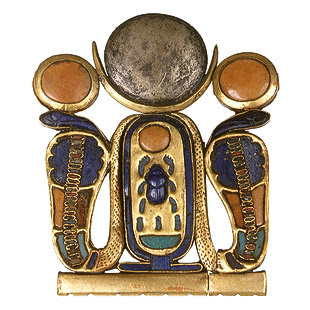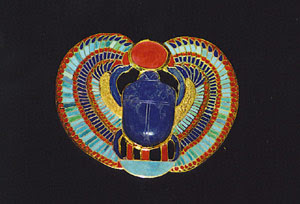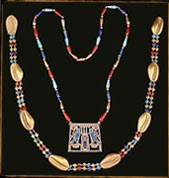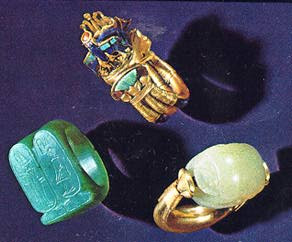

The Egyptians wore regular clothes but always wore elaborate jewelry. The personal jewelry was worn for ornamention and to show how wealthy the person was. Some of the jewelry included earrings, bracelets, anklets, rings, and beaded necklaces. The gems the Egyptians put in the jewelry were garnet, onyx, turquoise, amethyst, and lapis lazuli. They also added copper, gold, and shells. Egyptians also wore necklaces of colorful beads and amulets. They thought that wearing jewelry brought good luck.

Jewelry was extremely popular throughout the history of the Egyptian nation. Excavations of tombs have shown that queens of Egypt were almost always buried with a multitude of jewelry to be used in the afterlife. The amount of jewelry worn by an individual often indicated their social position and level of wealth. Jeweled collars, such as the one depicted on the Nefertiti costume of the statue uncovered and now on display in Berlin, were very popular and usually made of very brightly colored gems. The clothing of Nefertiti was not displayed on the statue, save the headdress; however it is quite easy to imagine that her dress was just as elaborate and bejeweled. Rings, anklets and bracelets were also part of the normal ancient Egypt fashion. Earrings, even in ancient Egypt, were common among wealthy women.
Even the poor, who could not afford much, attempted to adorn themselves with as much jewelry as was possible. While not nearly as expensive, the jewelry of the commoner was usually very brightly colored and was constructed of materials such as pottery.
Even the poor, who could not afford much, attempted to adorn themselves with as much jewelry as was possible. While not nearly as expensive, the jewelry of the commoner was usually very brightly colored and was constructed of materials such as pottery.















